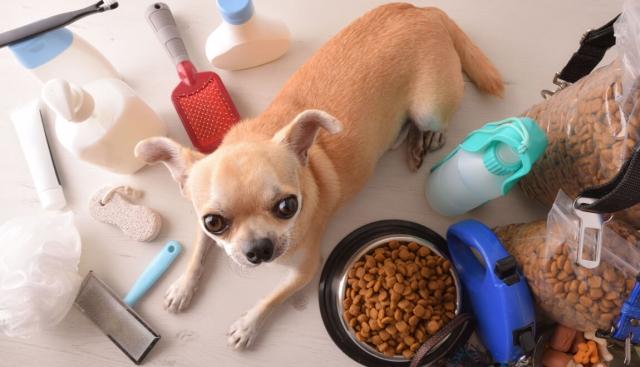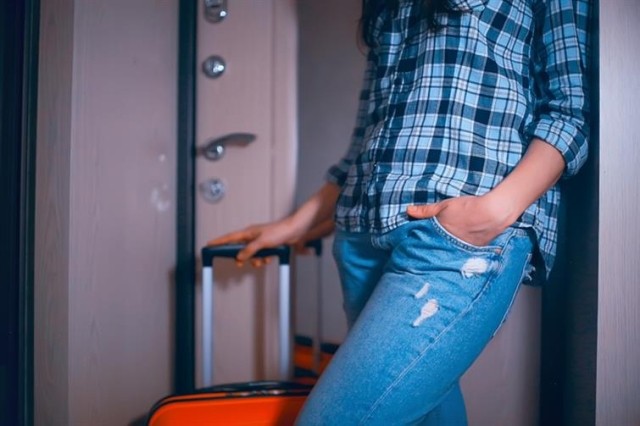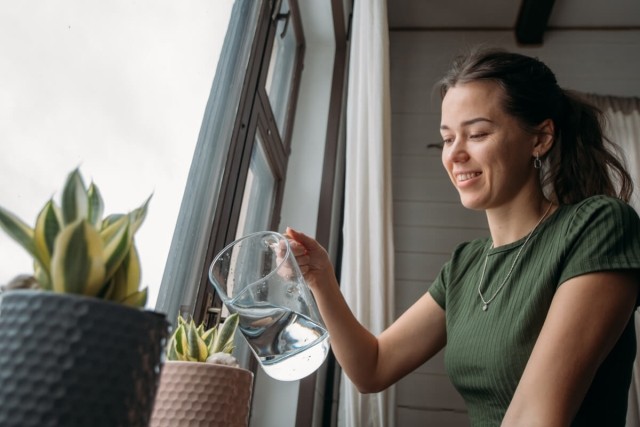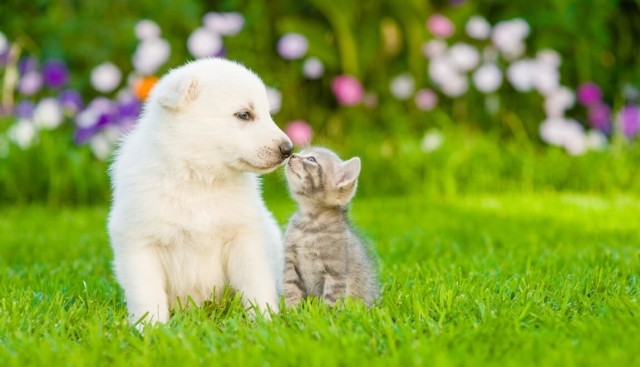When I became a pet owner for the first time, I was prepared for the constant care my pets would need. I knew it wasn't all cuddles and fun, but work and expense would also be involved. Trips to the vet, to the groomer, accidents and illness that would need to be dealt with — I was ready for all of it! However, I didn't consider one thing: how much stuff came along with a pet and how much time I would spend trying to find a suitable place for it all: dog beds, food bowls, large bags of food, baskets of toys, bath supplies, and (in the case of my always shivering chihuahua), a small "closet" for her extensive wardrobe.
Admittedly, some of the space issues were my fault. After all, a five-pound dog doesn't need more clothes than a Hollywood celebrity, and my sweet little pug didn't require three baskets of toys. However, getting a pet, even a tiny one, will probably require much more space than you realize. So, how do you find a place for it all in a small apartment? Here are some tips.
Assess Your Space
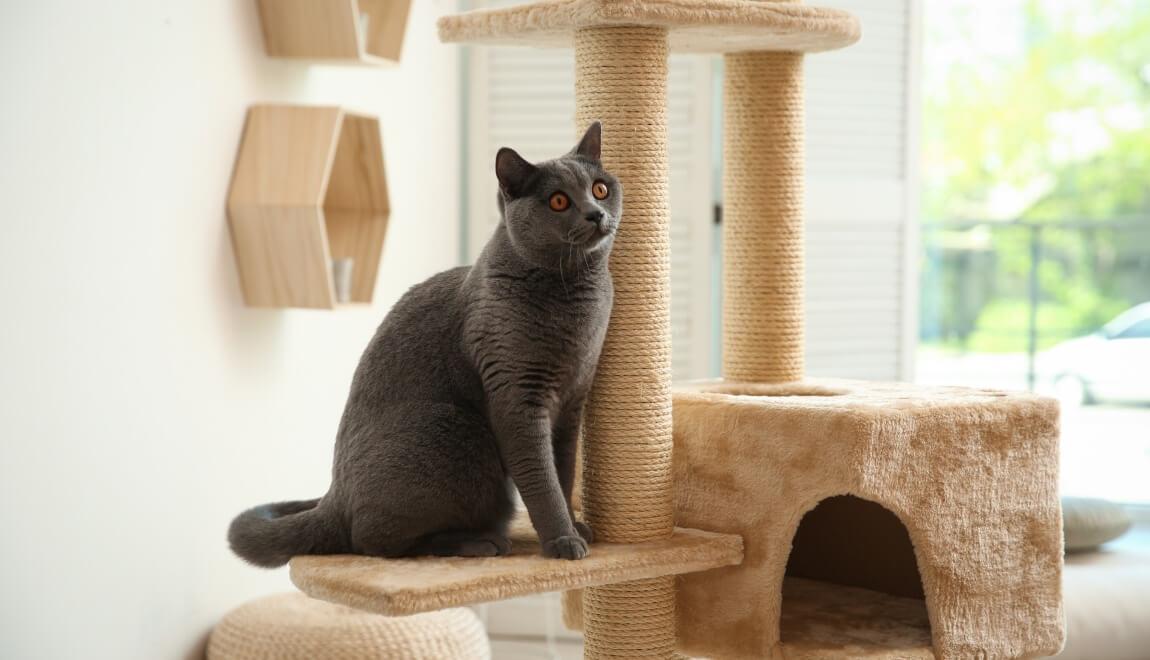
Consider the layout of your apartment and the typical traffic flow from room to room. For example, putting the food and water bowl near the kitchen doorway may seem like the best place for it, until every guest that comes to visit accidentally kicks the water bowl when entering or leaving the kitchen, resulting in the constant need to mop up spills.
If you place the cat tree in front of the only window you have in the living room, you run the risk of blocking your one source of natural light and having to peer around an annoyed cat to see outside. While the foyer might be the least-cluttered space in your apartment, putting the litter box right next to the front door isn't exactly the best way to welcome guests.
After determining the limitations of your space, look for areas where you can create pet zones. For example, near the front door, use some hooks and a storage bench to create a "walking zone." In the storage bench, keep walking supplies like a collapsible water bowl, waste bags, dog booties, treats, and whatever else you typically use when walking your dog. Keep leashes, harnesses, and jackets on the hooks for easy access.
Once you determine the best place for the food and water bowls, set up a "feeding zone." Put a cabinet or some shelves in the area and keep food, treats, medications, water supplements, and anything else you use during feeding time within easy reach.
Place a bright, colorful mat beneath the bowls if you must put your pet's dishes near a high-traffic area. This will help in two ways: a brightly colored mat will draw your attention, making it less likely that you'll run into the bowls, and it will protect your floors from the inevitable spills when someone does bump into it on their way to the kitchen for a drink refill.
Find Multi-Functional Furniture
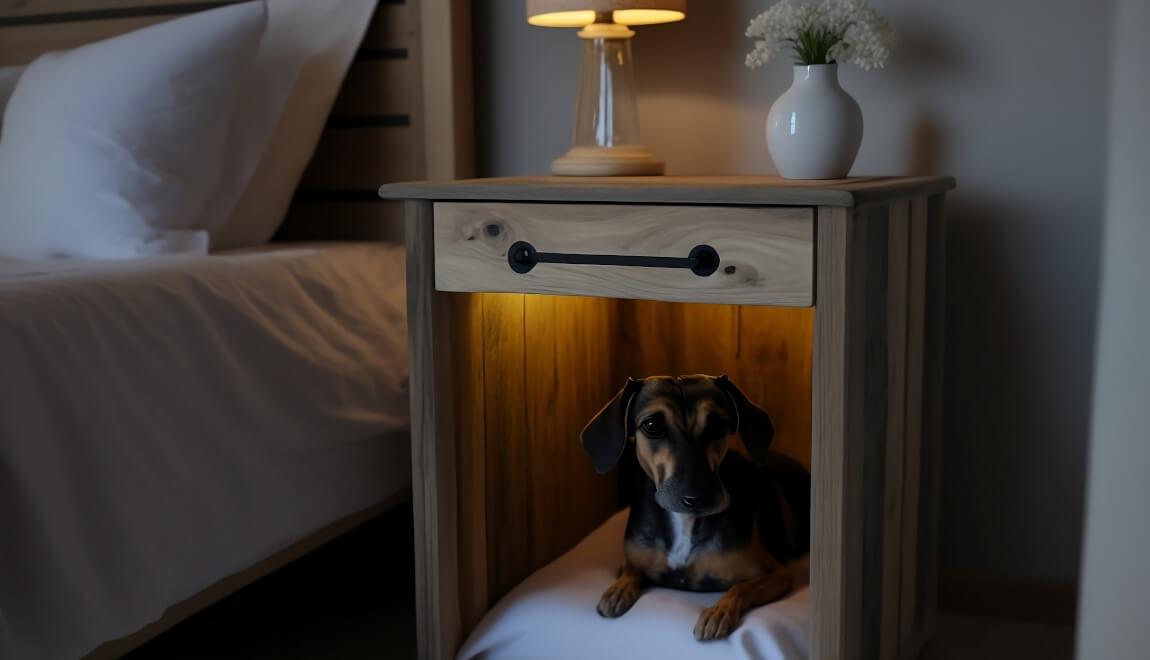
Double-duty furniture is great for storing a variety of pet supplies. Blankets, toys, and clothing can be tucked away in a storage ottoman or bench. A trunk makes a great coffee table and provides storage space for pet supplies. Look for furniture that cleans easily (for example, an unlined trunk rather than one lined with fabric).
An end table can be an excellent spot for a pet bed. I found a side table with doors at a thrift store. I removed the doors and added a pillow and blanket to the cubby underneath, giving my dogs a little hideaway and saving precious floor space in my living room.
If you can't find a spot for your cat's litter box, consider removing a door from your bathroom cabinet and storing it beneath.
Decluttering and Rotation
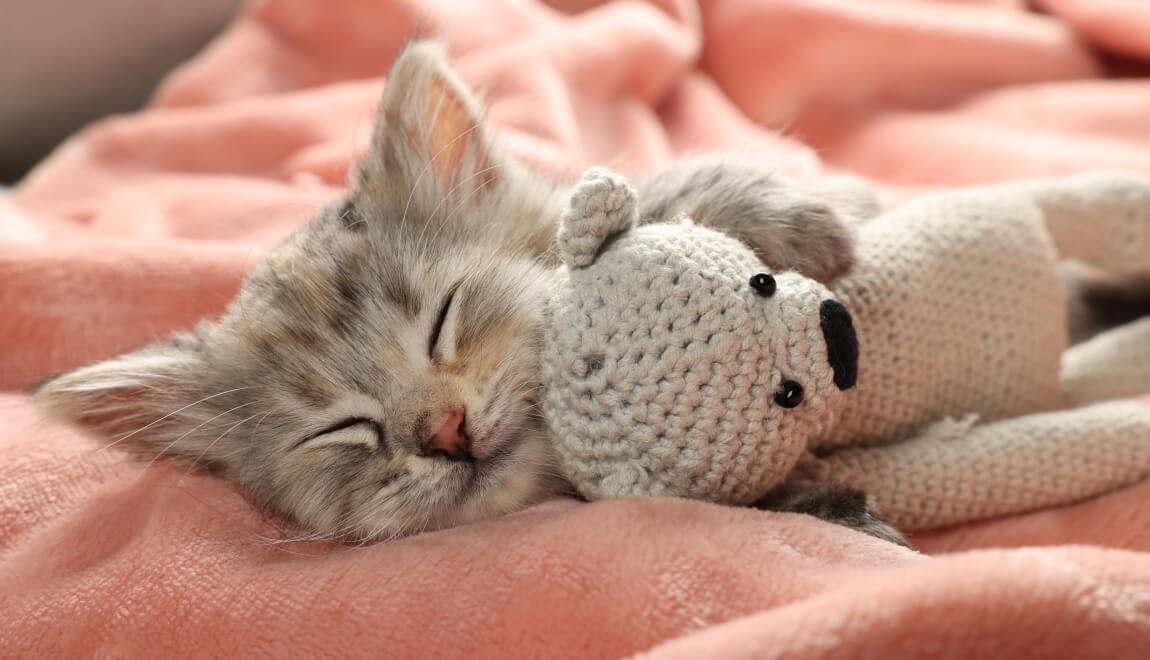
Take inventory of your pet's supplies and determine what you can store. For example, your dog doesn't always need every toy available, so get a storage container (such as an under-the-bed storage box or over-the-door shoe organizer) and put all but two or three of your dog's toys away. This will control clutter and keep your dog from becoming bored if you swap the toys out regularly (of course, if they have a favorite stuffed animal, leave that out all the time).
Utilize Vertical Space
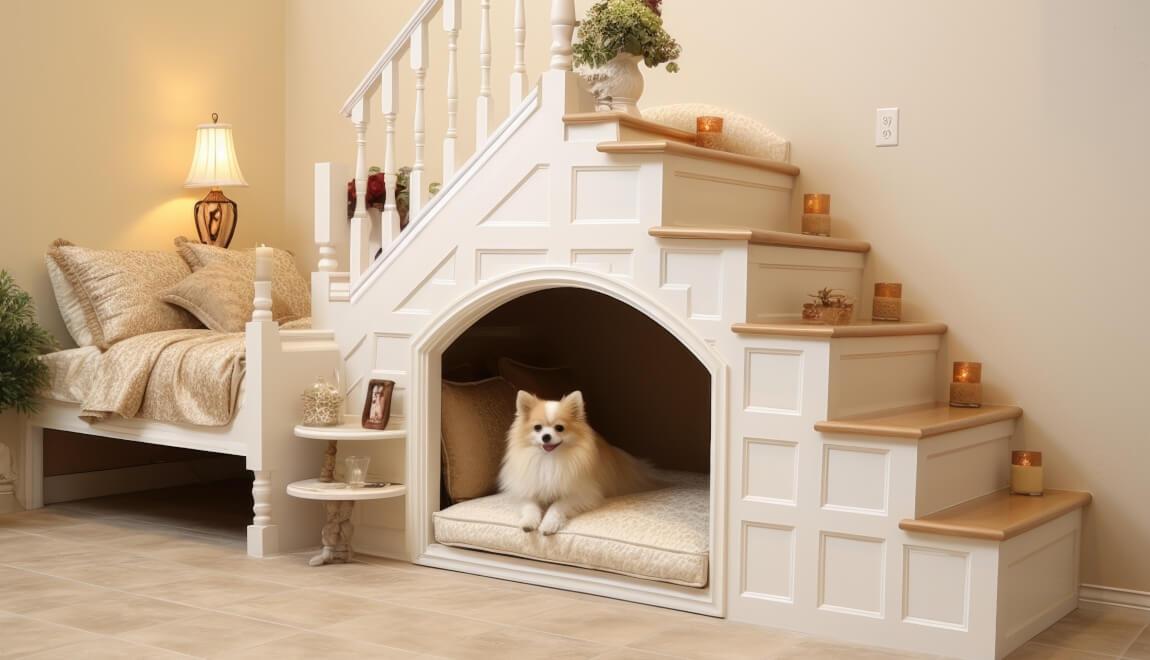
Look up if you don't have enough floor space to accommodate all your pet supplies! Utilizing vertical areas will help you maximize available space while keeping supplies organized and accessible.
Wall-Mounted Shelves and Hooks
Floating shelves are great for storing items like grooming supplies and treats, while hooks and pegs are perfect for leashes, collars, and lightweight toys. Cans of pet food can also be contained on a shelf, freeing up your cabinet or pantry space. Group similar items together to maintain order and prevent clutter.
Hanging Organizers
Consider hanging organizers designed for small spaces, like over-the-door or wall-mounted pocket organizers. These organizers are great for storing small items such as brushes, bath supplies, toys, and even small bags of treats.
Vertical Toy Storage
Designate a corner or wall for vertical toy storage using toy hammocks or nets. This will allow you to keep plush toys, balls, and chew toys off the floor while showcasing your pet's collection. As long as you make sure the storage is secure, you can hang it low so it stays within your pet's reach.
Floating Cabinets and Cubbies
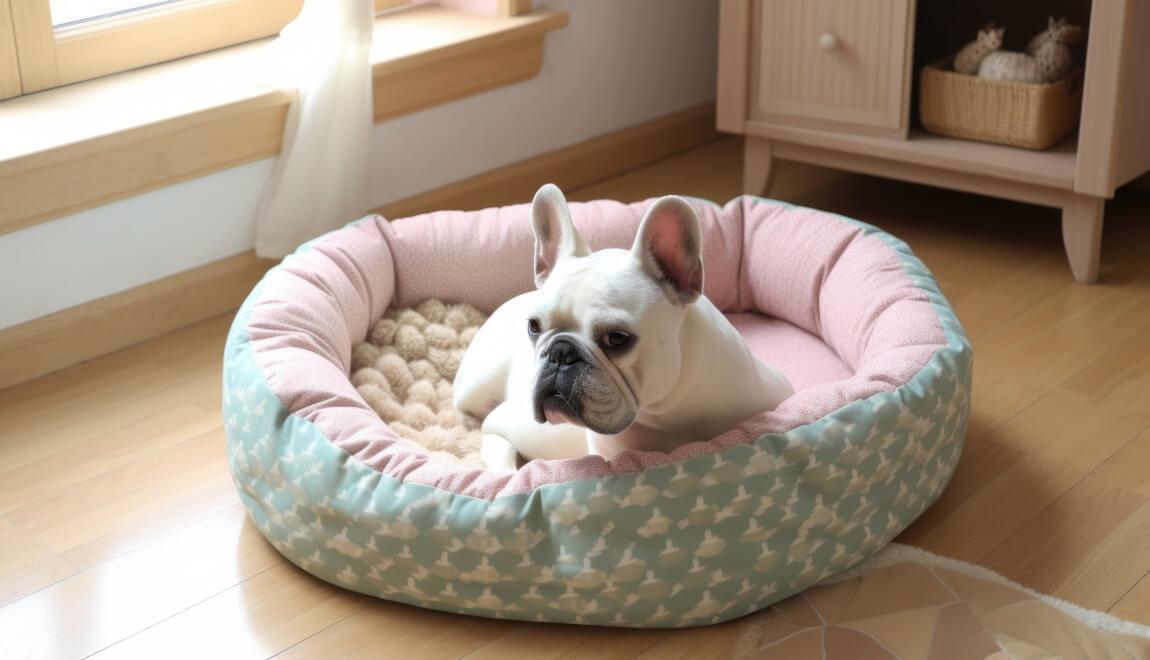
Invest in floating cabinets or cubbies that can be mounted on walls to store larger items like pet carriers, litter boxes, or beds. Before hanging anything heavy, check your lease for restrictions and requirements.
Choose pieces that blend well with your apartment's decor for a seamless look. If you can't hang shelves in your apartment, consider a floor-to-ceiling bookcase instead. To help your pet storage blend into your décor, use the top surface of the cabinets or cubbies to display plants or decorative items.
By thinking vertically, you'll free up valuable floor space and create a visually appealing organization system for your pet supplies. However, remember that if you hang shelves, you'll need to patch the holes upon move-out or you could risk losing your security deposit.
Along with finding the perfect dog or cat to share your apartment with, you'll want to make your home a great space you both enjoy. These storage tips will help you keep even the smallest space neat and organized.


